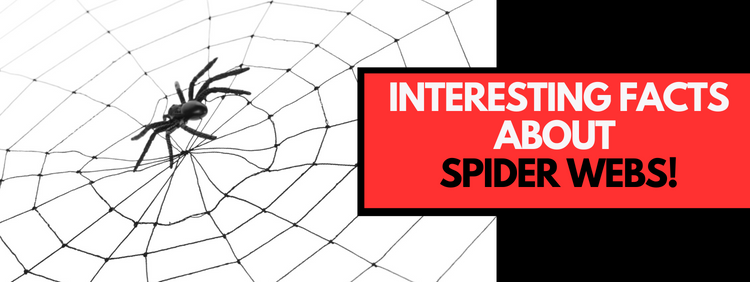Interesting Facts About Spider Webs!

Spider webs can be a nuisance, prompting calls for professional spider control. However, they can also be very beautiful, especially when they are outside covered in dew or frost. There is nothing else in nature seemingly so delicate and yet so strong. Before you call for residential pest control, here are some interesting facts you should know about webs and the spiders that build them.
1. A Spider May Replace Its Web Every Day
Perhaps you have gone through your house sweeping away spider webs, only to see them return the next day. This daily annoyance may prompt a call for spider removal. What you might not realize is that spiders may be rebuilding their web every day whether you sweep the old ones away or not. Not all spiders do this, but orb weavers are among the types most likely to continuously build new webs.
One reason why spiders do this is to avoid predators. By night, a web may be an effective tool to catch flying insects, but by day, it can act as a signal to bug-eating birds that there is potential food here. Another reason is damage to the web itself. A damaged web is less effective at catching bugs. Some types of spiders repair the web, but others tear it down completely and start all over.
If you’re wondering why you never see the debris of the dismantled web, it’s because spiders often eat it to give them the energy to build a new web. A bigger and better web can catch more and larger insects, a pay-off that makes up for the energy they expend building it.
2. Spiders Have Design Sense
You may think that a spider web would be a quintessential example of form following function, but this is not necessarily the case. When early researchers started studying spider webs, they noticed some extra silk designs. They assumed that these had to be part of the structure of the web and called the designs “stabilimenta,” based on their presumed function. However, the webs of nocturnal spiders do not have stabilimenta, so the theory now holds that spiders must add some architectural features to their webs for decoration.
3. Spider Webs Actively Attract Prey
Spiders probably don’t add decorative stabilimenta to their webs for their own enjoyment. A more likely explanation is that the showy designs are meant to help attract insects to the web. For decades, people believed that spiders just built their webs in places where insects were likely to be and then sat back and waited.
More recent research suggests that spider webs are designed and built not only to ensnare insects but to lure them into the trap. It has been suggested that the stabilimenta resemble gaps in vegetation that insects are more likely to try to fly through. This would explain why nocturnal spiders spin webs without stabilimenta; they would not be seen by insects flying at night, so building them would be a waste of the spider’s energy.
This may also be a reason why spiders’ webs are shiny. Spider webs reflect ultraviolet light, which insects are able to see much better than longer wavelengths. Since many flying insects are attracted to light, the shiny spider webs may serve as a beacon to attract them to their doom.
Call Truly Nolen for a Spider Control Plan
While spiders can be annoying, they are not necessarily your biggest pest problem. Since spiders feed on insects, their persistent presence may be a sign of a primary insect infestation. Our well-trained residential pest control technicians can assess your spider problem as well as a primary insect infestation and work with you to formulate a plan to address both. Learn more about our spider control services.